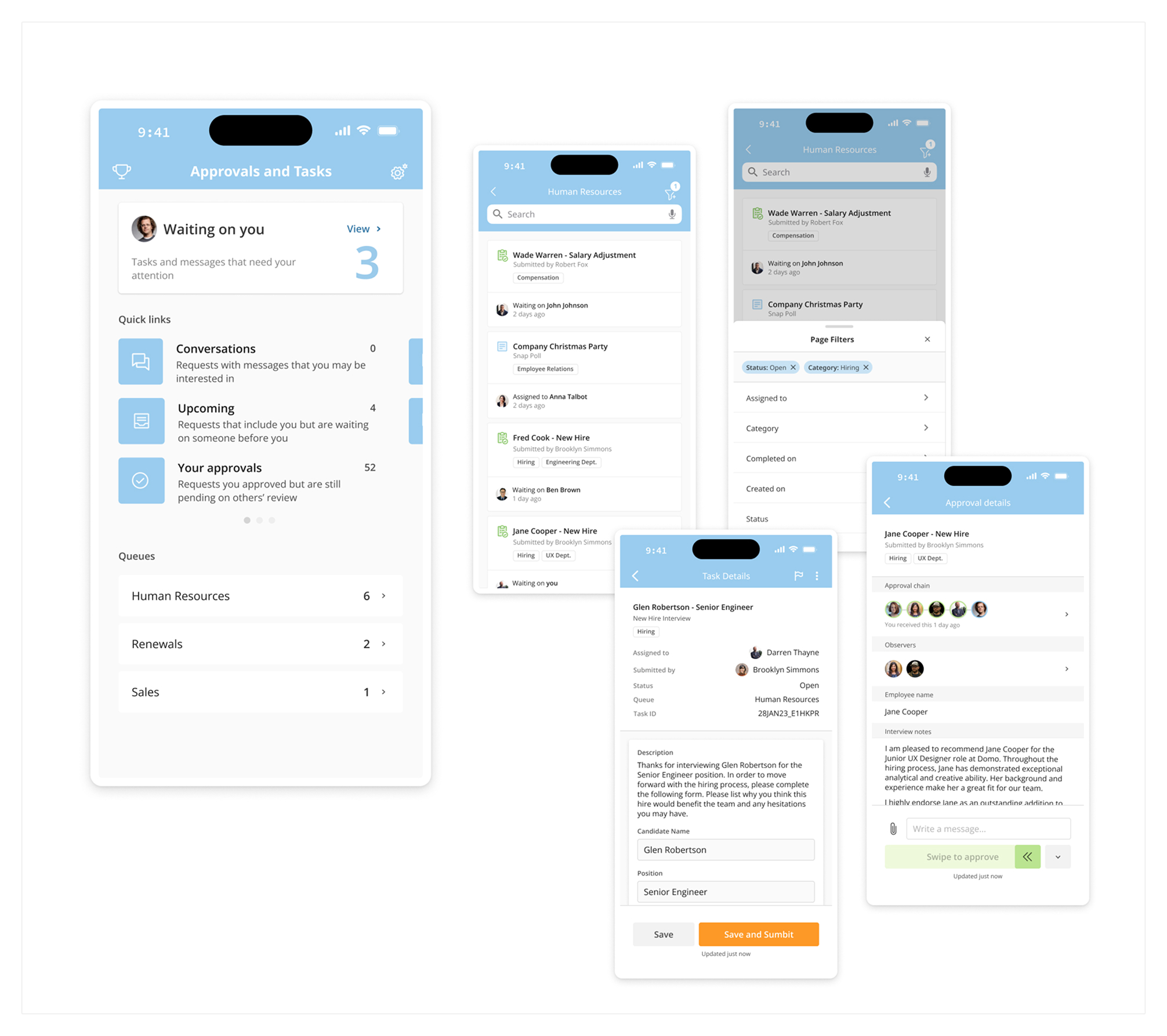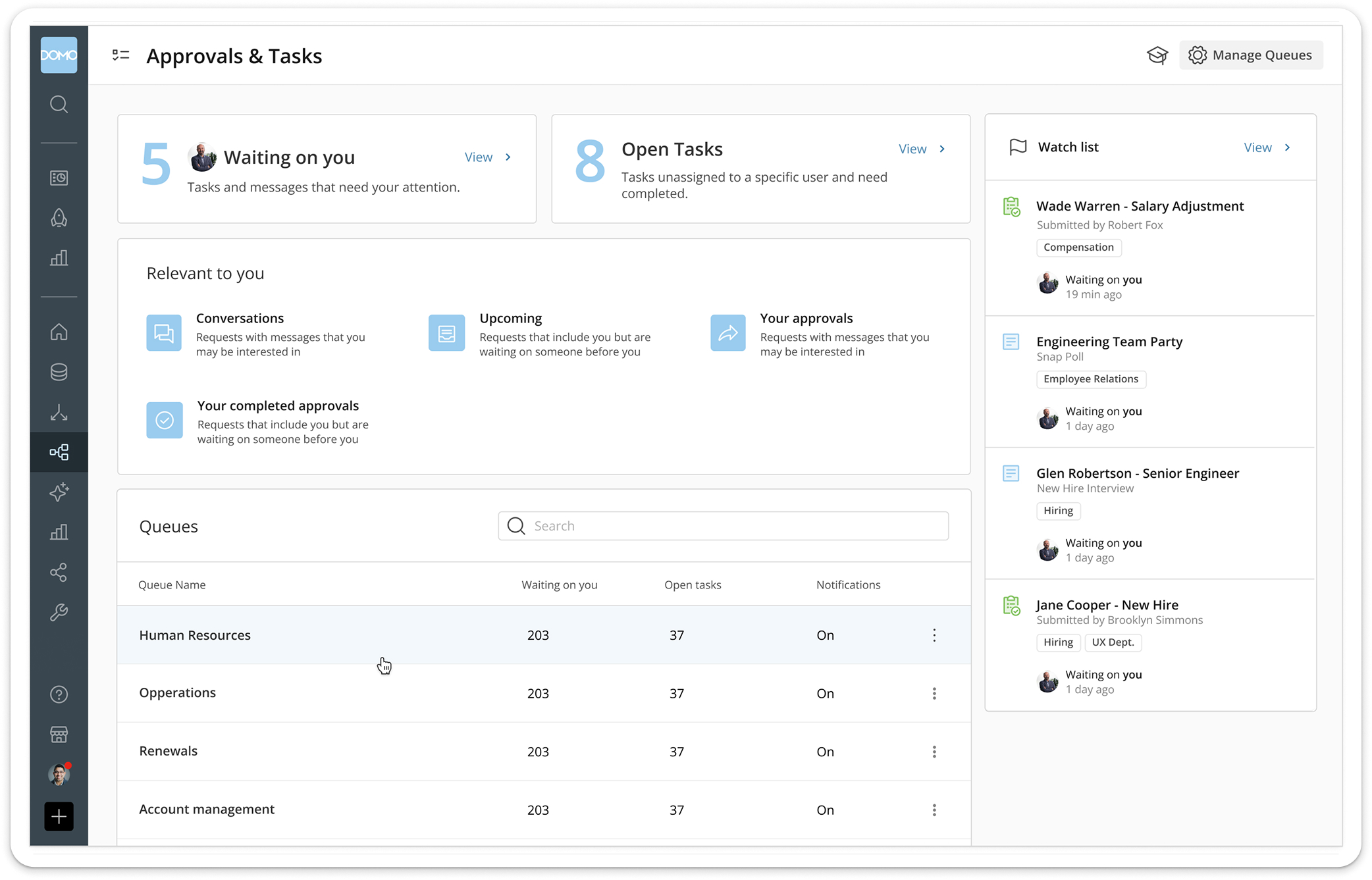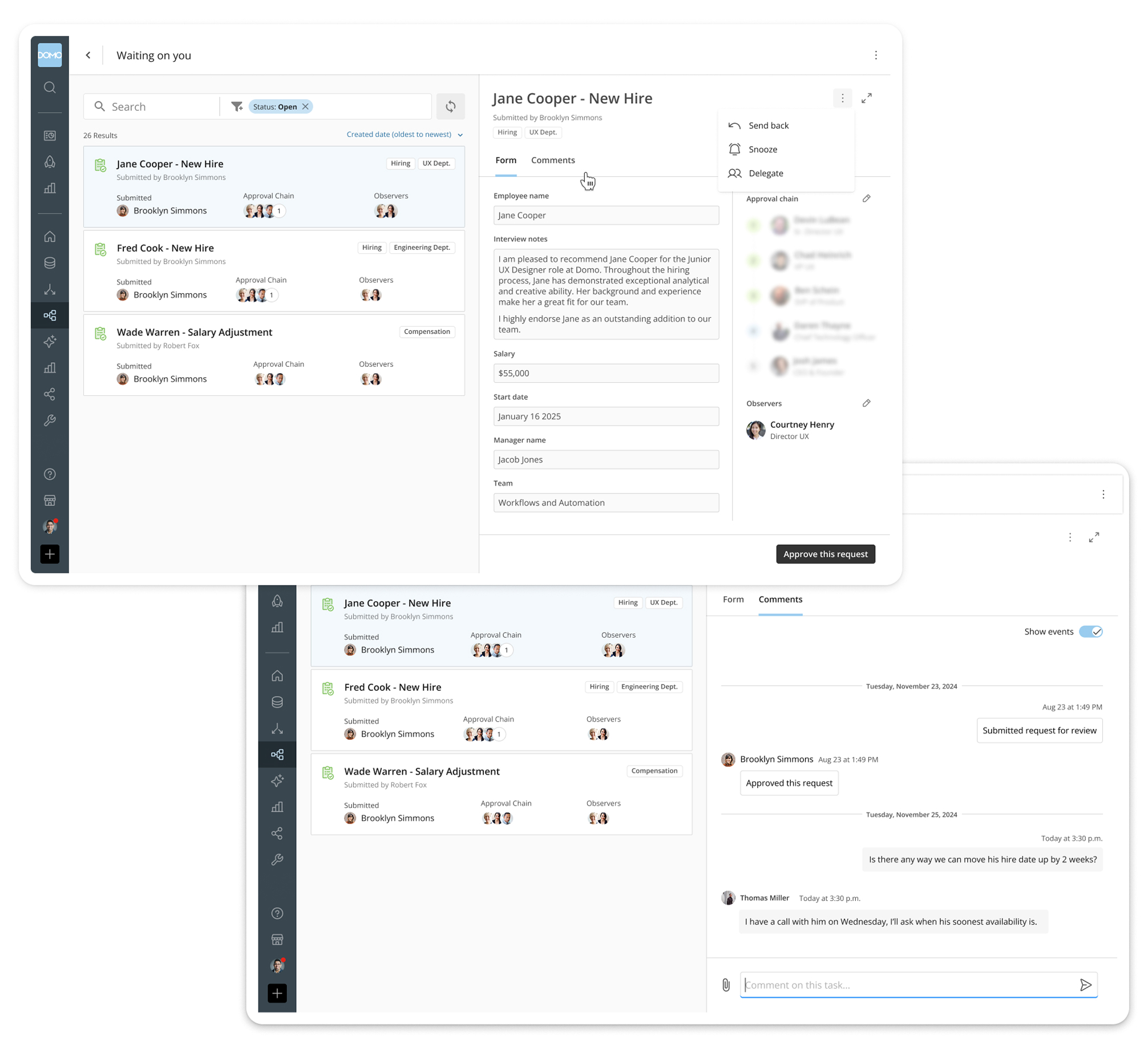
Automated Task Manager
Merging related products to provide dynamic automation
Overview
A year or so before I started this project, I had been asked to design a product called ‘Task Center’. Task Center would automatically organize and assign tasks generated from an automation called Workflows. A year later, I returned to this project to merge Task Center with an existing product called ‘Approval Center’. We were asked to merge these two experiences for two reasons. First, It would consolidate all task oriented activity to one place, reducing the number of places users had to check in on. Second, users wanted to be able to automate process in Approval Center the way they could with Task Center. Merging the two products would allow them to use the same functionally for both task types.
Year:
2025
Original Timeline:
approx. 2 month
Project Merge Timeline:
2 weeks
My Role
I designed the new product experience, pulling from the previous product I had designed and the existing product ‘approvals’. I designed for both desktop and mobile experience. I met with developer leads and the VP of engineering throughout our 2 week sprint to focus our efforts and make sure we could make our deadline. I also created prototype mockups to represent the interaction and usability of the new product to be presented directly to our CEO for approval.
Merging two prodcuts
The request to merge these two products came directly from our CEO, and I was asked to
deliver an initial round of mocks within a few days. To begin, I first familiarized myself
with the Approvals product, and noted the differences and similarities between products.
Differences:
- Assigner vs assignee avatars shown on task items
- Difference in meta data (submitted by vs form name)
- Delegation and snooze features in Approvals
- swipe right to approve feature in Approvals (a favorite of our CEO’s)
Similarities:
- Both had attached comments
- Both appeared in a from like format
- Both used a kind of tagging system Both had similar title format requirements

Mobile expereince
Mobile was how we expected our CEO and other executives to use the most, so this was the
experience that needed to match the Approvals the closest. Knowing this, we started with
mobile and then adapted our desktop version to match.
Changes included:
- Added ‘queue’ which acted as task folders
- Maintained ‘quick links’ available in Approvals
- Used icons represented in other ares of the product to indicate form types
- Simplified the meta data shown on card level
- Included the template name (if applicable) in the task name
- Adopted the assignee avatar used in Approvals instead of the assigner used in Task Center

Desktop expereince
Once mobile was done, I moved to desktop designs. I had already designed the general layout
previously for Task Center. Even then, we had anticipated that we would someday merge the
two products, so dashboards where already quite similar.
Changes included:
- Changed the top tiles: ‘your tasks’ to ‘waiting on you’ swapped ‘stats’ for ‘open tasks’
- Added task categories from Approvals
- Removed activity and replaced with ‘watch list’
- Added ‘queue list’ from Tasks
Our goal was too keep the experience as close as possible to the existing approvals experience while still keeping the additional functionality that Task Center provided.

Approval Forms
Approval would appear very similar to a traditional task form, with the addition of an ‘approval chain’, ‘observers’, and additional features including ‘send back’, ‘snooze’, and ‘delegate’.

Task Form
Task forms remained mostly unchanged from the previous design. We did however simplify some of the options to better align with the Approval tasks. Rather than listing history and comments separately, we borrowed the ‘show even’t toggle from Approvals to show them in one chronological timeline.

Automating an Approval form
Once our 2 week sprint was done, we needed to build a way for Approvals to be created in our
Automation tool Workflows.
One of the biggest advantages Task Center had over
Approvals was it could be integrated into a Workflow automation. We needed to make this same
functionality available to approval tasks. We used the existing Task Center form builder and
revised it to accommodate approvals.
- Similar option to ‘create new’ or ‘choose existing’.
- Steps by step process to first build the form, then add approvers/observers, then preview.
- The form builder portion worked the same as the current builder’
- When adding approvers, you could define by custom value or variable value. This allowed the approval form to by dynamic and re-usable.
- The preview step would allow users to see all these steps compiled into the final form.

Conclusion
We knew the request to merge these products would come eventually. It had been delayed for
about a year before the 2 weeks deadline arrived on our desks. Even prepared though, this
was a whirlwind of a project.
I was relieved when it was passed from my hand to
the hands of the devs. When I asked if the CEO approved of the prototype, I was told his
response was that there was nothing to approve because it was so similar to the current
Approvals experience. We had
accomplished goal and significantly improved the functionality and capability of Task
Center.